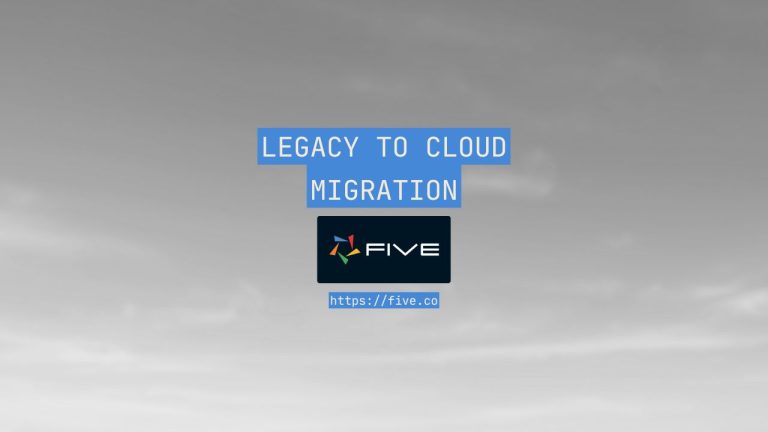Create an ESG Database & Reporting Tool In 3 Steps
Learn How to Develop an ESG Database and Reporting Tool
Creating and managing an ESG database and reporting tool has become an essential process for businesses striving to meet the growing demands of environmental, social, and governance (ESG) standards.
In many regions, ESG reporting is no longer optional but a mandatory requirement for companies of all sizes, whether public or private. To effectively report on ESG criteria, businesses must first capture, measure, and analyze relevant ESG data. Traditionally, ESG reports have relied on fragmented data scattered across various spreadsheets, leading to inefficiencies and potential inaccuracies.
A well-designed ESG database and reporting tool can transform this process, providing a centralized, streamlined, and organized approach to managing ESG data. By integrating data from multiple sources into a cohesive system, companies can easily track environmental, health, regulatory, social, and safety metrics. This not only enhances compliance and transparency but also supports strategic decision-making that aligns with sustainable business practices.
Let’s explore how you can create an effective ESG database and reporting tool for your business in just a few steps.
Five has a team of experts ready to assist you. So, if you ever feel like you’re in over your head, don’t worry, our expert developers are here to help. And yes, we promise not to charge you an arm and a leg or leave you with a system that only we understand. To get a free consultation, visit this page: “Hire An Expert.”
What Is an ESG Database?
An ESG database is a specialized database designed to store, manage, and organize data related to a business’s environmental, social, and governance (ESG) performance indicators, such as carbon emissions, community engagement, diversity metrics, and anti-corruption measures. By serving as a centralized hub for ESG data, this type of database allows companies to track, analyze, and report on their sustainability efforts with greater accuracy and efficiency.
ESG databases are particularly valuable for small and medium-sized enterprises (SMEs) as regulatory bodies, investors, and larger corporations increasingly demand ESG data from all tiers of the supply chain. Beyond regulatory compliance, an ESG database can help SMEs embed sustainability into their operations by providing insights into areas that need improvement and helping them align with best practices in ESG management.
A well-structured ESG database offers a user-friendly, searchable interface that displays key performance indicators such as greenhouse gas emissions, waste management, water usage, and social initiatives. It acts as a comprehensive repository, enabling organizations to efficiently capture and schedule data, track progress, and maintain a single source of truth for all ESG-related information. This centralized approach not only simplifies compliance reporting but also ensures data integrity, improves data quality, and enhances decision-making processes.
By integrating and centralizing ESG data, these databases help organizations maintain reliable and consistent records, streamline data collection processes, and ultimately drive better sustainability outcomes.
ESG Databases in Excel
More often than not, businesses set up and maintain their ESG databases in Microsoft Excel or Google Sheets.
While these spreadsheet-based solutions are a natural starting point, especially for smaller businesses, a word of caution. These spreadsheets tend to have a life of their own and typically create problems, such as:
1. Version Confusion:
Different departments or users have their local copy of the spreadsheet (“ESGDatabase_NEW”, “ESG Database – v2.1”, “Old_ESG_Database – DO NOT USE”, etc.)
2. Lack of Version and Access Control:
Without clear ownership or version control, changes made by staff can be lost or duplicated, especially if the person responsible for updates leaves the company and a new person takes over.
3. Data Inconsistencies:
Comments, highlights, and overwrites obscure data. Without clear guidelines, documentation and ownership, spreadsheets get messy.
4. Security Breaches:
Spreadsheets cannot be easily secured or protected from unauthorized access. Excel or Google Sheets do not directly support user roles, authentication, or granular access control.
Setting up your database as a spreadsheet more often than not defeats its purpose of becoming your single source of truth.
Instead, you end up constantly fighting fires and cleaning up spreadsheets. That’s why we recommend creating a proper database to manage your ESG data more effectively, safely and professionally.
What Is an ESG Reporting Tool?
Once your ESG database is established, the next critical step is to develop an ESG reporting tool. An ESG reporting tool transforms raw data from your ESG database into actionable insights, making it easy to communicate your sustainability performance to stakeholders.
ESG reporting tools are designed to generate comprehensive ESG reports with just a click, tailored to meet the specific requirements of business partners, regulators, or investors who may request quarterly or annual ESG disclosures.
This streamlined reporting process not only saves time but also ensures consistency and accuracy, enabling you to present reliable ESG data whenever needed.
In addition to external reporting, ESG reporting tools offer powerful visualization capabilities through custom dashboards. These dashboards provide internal management with real-time analytics and performance tracking, allowing them to monitor key ESG metrics, identify trends, and assess the impact of sustainability initiatives.
By turning complex ESG data into clear, visual insights, these tools support data-driven decision-making and help embed sustainability into the core of your business strategy.
How to Create an ESG Database in 3 Steps
Building an ESG database usually requires technical knowledge. For instance, you’d need a substantial understanding of database languages like SQL, not to mention the front-end development for user interaction.
Five is an online database builder specifically designed to make creating an ESG database much faster.
Creating a database with Five won’t be entirely effortless, but it will be significantly easier than spending 60+ hours learning various coding frameworks and languages.
With Five, you can
1. Set up a custom database in minutes, and
2. Create a user-friendly, login-protected web interface for your database.
3. You can also easily import your existing data from Excel, Google Sheets, or CSV files, allowing you to get started quickly.
Five also offers the flexibility to create custom business logic with code, generate ESG PDF reports, and visualize your data through custom charts and dashboards. It is the ideal tool for ESG data capture, reporting, and analysis.
Additionally, you can set up email notifications for your business or off-site teams, ensuring communication is seamless, standardized, and automated. This is especially helpful if your business has multiple sites that need to report data back to headquarters.
Get free access to Five here and start building an ESG database.
Step 1: Identify Relevant ESG Indicators
The first step in building your ESG database is to compile a comprehensive list of ESG indicators that are relevant to your business and industry.
These indicators form the backbone of your data collection and reporting efforts, reflecting key environmental, social, and governance metrics that stakeholders expect to see.
To identify applicable indicators, consult widely recognized standards and guidelines such as the Global Reporting Initiative (GRI), Sustainability Accounting Standards Board (SASB), or industry-specific frameworks that provide detailed measurement metrics and units tailored to different sectors. These resources make it easy to pinpoint the most relevant ESG indicators, ensuring your data aligns with industry benchmarks and regulatory expectations.
Here are some common ESG indicators typically tracked within an ESG software system, including both general and sector-specific metrics:
- Scope 1, 2, and 3 Emissions: Measure direct, indirect, and value chain emissions in tonnes of CO2 equivalent (CO2e).
- SOx and NOx Emissions: Track sulfur and nitrogen oxide emissions per product unit or operating hour.
- Effluent Discharge: Monitor the total volume of effluent generated and its impact on the environment.
- Waste Management: Calculate the ratio of waste generated to production output, emphasizing waste reduction efforts.
- Energy Consumption: Record total energy consumed in kilowatt-hours (kWh) or megawatt-hours (MWh).
- Water Usage: Track the total volume of water used in operations, highlighting conservation efforts.
- Energy Intensity: Measure energy usage per employee or production unit to assess operational efficiency.
- Diversity Metrics: Monitor workforce demographics, including gender, age group, and ethnicity distributions.
- Discrimination Incidents: Document the number of reported incidents and actions taken to address them.
- Labor Rights: Assess measures supporting freedom of association and collective bargaining.
With your tailored list of ESG indicators, you are ready to proceed to the next step, where you will define data collection processes and integrate these indicators into your ESG database system.
Step 2: Standardize Data Attributes with Defined Units and Choices
With your list of ESG indicators in place, the next step is to define key details for each attribute, including units of measurement, data formats, and predefined choices where applicable.
Standardizing these elements ensures consistency across your ESG database, laying the groundwork for reliable, repeatable reporting over multiple years.
Consistency is crucial in ESG reporting, as it allows for accurate comparisons over time and enhances the credibility of your data. By establishing clear units of measure (e.g., tonnes of CO2e for emissions, kWh for energy use) and standardized data entry options (e.g., dropdowns for categorical data like employee demographics), you reduce the risk of errors and discrepancies. This structured approach not only simplifies data collection but also supports seamless integration of data into reporting tools and dashboards.
Implementing these standards early on will help maintain the integrity of your ESG data, enabling transparent communication with stakeholders and more informed decision-making. Once these foundational details are defined, you’ll be ready to move on to Step 3, where we will build the ESG database.
Step 3: Create Your ESG Database
Your list of ESG indicators is ready? Great, let’s move all of this into a proper database.
To do so, sign up for Five, an online database builder that comes with a simple point-and-click interface for creating relational databases and a graphical user interface.
Follow our video tutorial to build your database tables, forms, charts, and reports:
ESG Database: Details
The ESG Database Schema
To better understand how an ESG database and reporting tool functions, let’s explore a simplified example of an entity-relationship diagram (ERD). This diagram visually represents the core entities, attributes, and relationships within an ESG system, demonstrating how data is organized, connected, and utilized for reporting purposes.
Indicators:
- Attributes: Indicator ID (Primary Key), Name, Description, Unit of Measure, Category (e.g., Environmental, Social, Governance).
- Purpose: Stores the details of each ESG metric tracked, such as emissions, water usage, and workforce diversity.
Data Entries:
- Attributes: Entry ID (Primary Key), Indicator ID (Foreign Key), Value, Date, Source, Reporting Period.
- Purpose: Records individual data points for each indicator, capturing the values measured over time.
Units of Measure:
- Attributes: Unit ID (Primary Key), Unit Name (e.g., tonnes, kWh), Description.
- Purpose: Ensures consistency in how data is measured and reported.
Reporting Periods:
- Attributes: Period ID (Primary Key), Period Name (e.g., Q1 2024), Start Date, End Date.
- Purpose: Defines the specific time frames for which data is captured and reported.
Each indicator is linked to multiple data entries, capturing its values over time. This one-to-many relationship allows for comprehensive tracking and historical analysis.
Data entries are associated with specific units, standardizing the way each value is recorded and reported.
Last, data entries are tied to specific reporting periods, ensuring accurate data aggregation for scheduled reports.
ESG Database: Key Features
A Customizable ESG Database
To define a database in Five, we start by defining the fields (attributes) we want to store in our database. We can do so using Five’s Table Wizard, a user-friendly, point-and-click database design tool. Add as many fields as you wish to your ESG database. The database is fully customizable.
Simple-to-Use Forms
We then create the form(s) that our users can interact with, again using just a few clicks. For example, adding a drop-down for relevant fields or working with regular expressions ensures ESG data can be captured consistently, which helps maintain data cleanliness.
Searchable and Online
Our ESG database is searchable and hosted online. It can be accessed by anyone (with login credentials), anywhere at any time.
Login Protected and Secure
Securing confidential data is paramount for businesses of all sizes and projects. Five comes with a pre-built authentication feature that adds a login screen to your application. Only registered users with valid credentials can view or edit data. You can also add multi-factor authentication for extra security.
Add a ESG Dashboard
You can also add a dashboard that provides insights into ESG data over time.
Get Started with Five Today
To build your custom ESG database with Five, sign up for free access and start the process. If you need assistance, visit our forum to get help from our application development experts as you add more features to your database application.
By following the steps mentioned above, you can create robust and scalable ESG database tailored to your needs, all while using the tools provided inside of Five.


